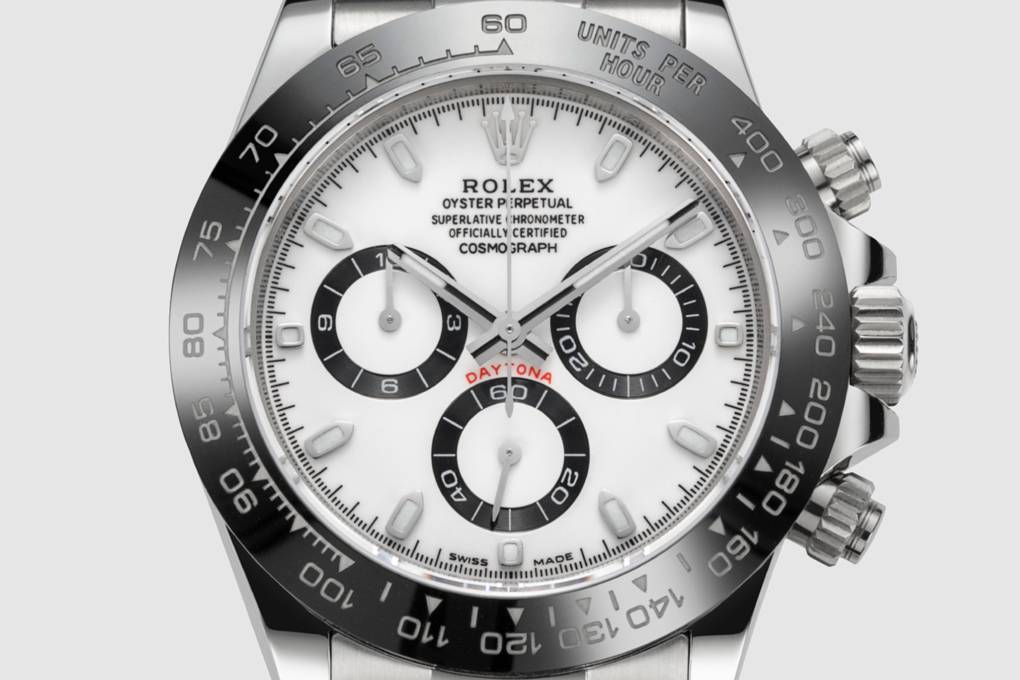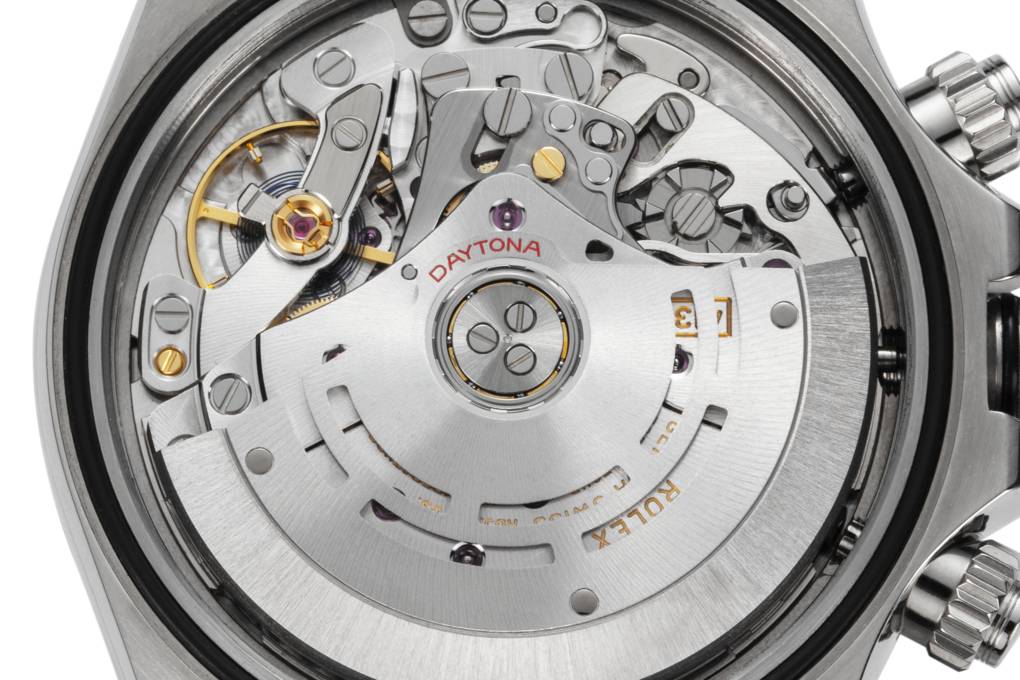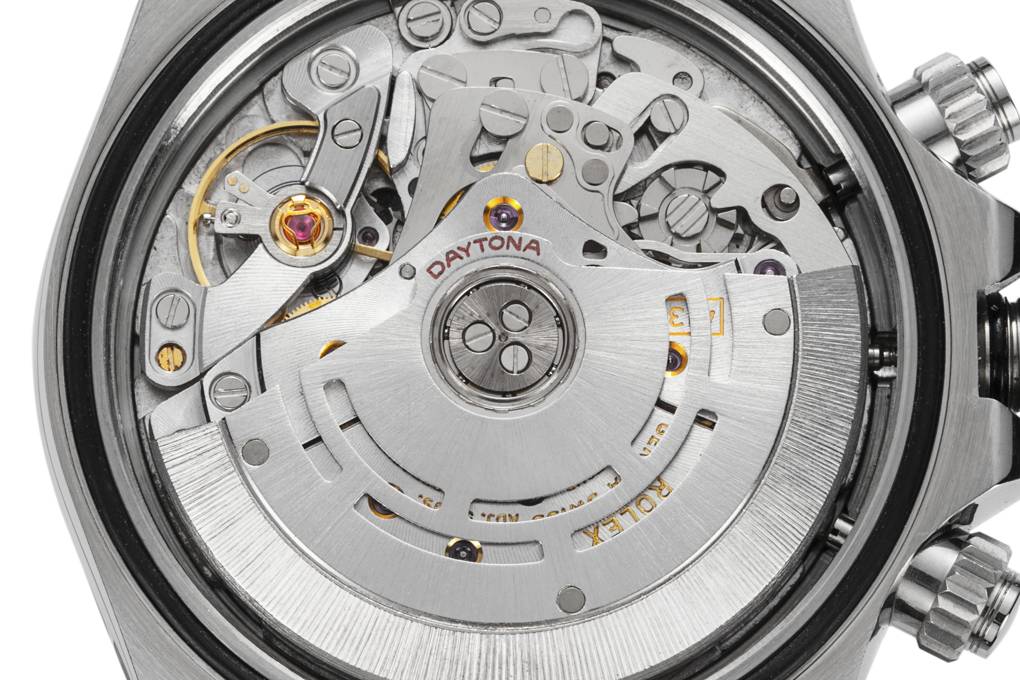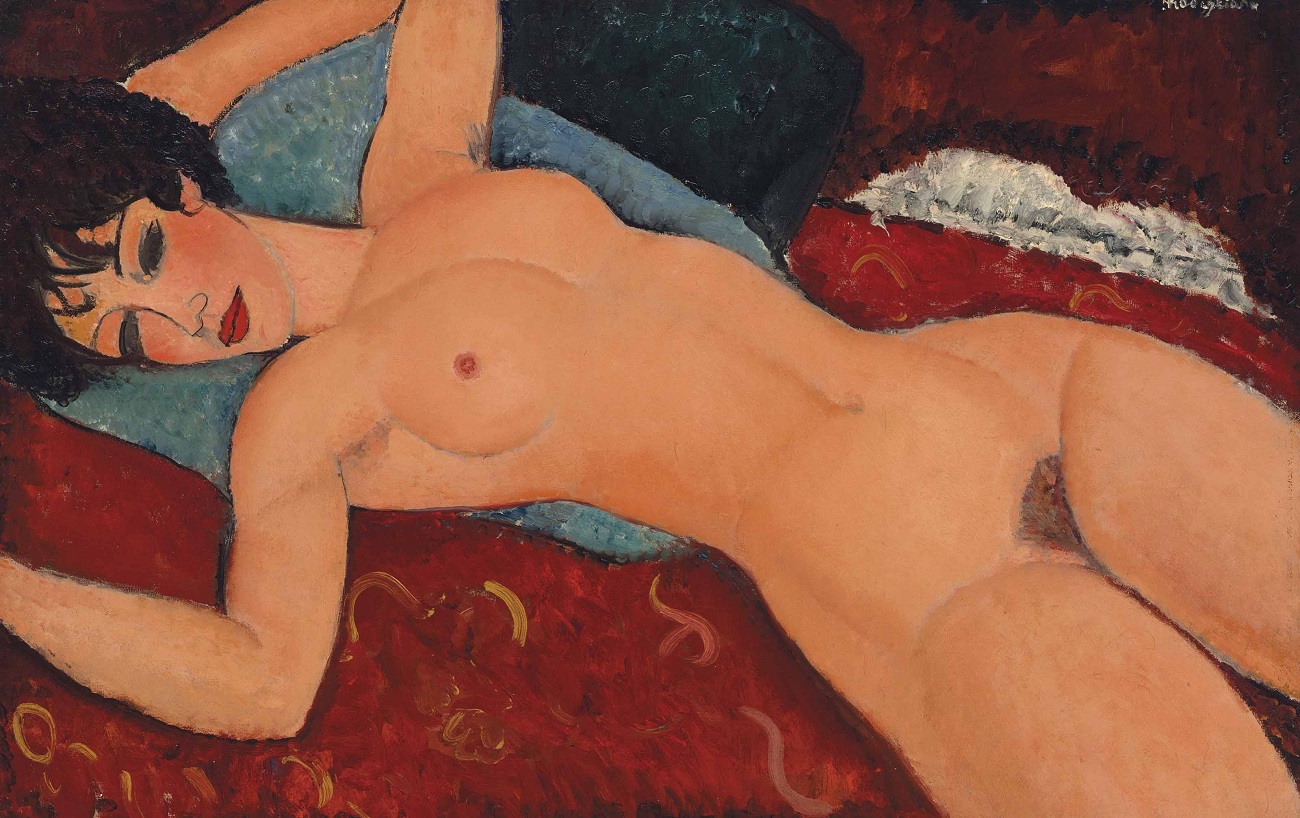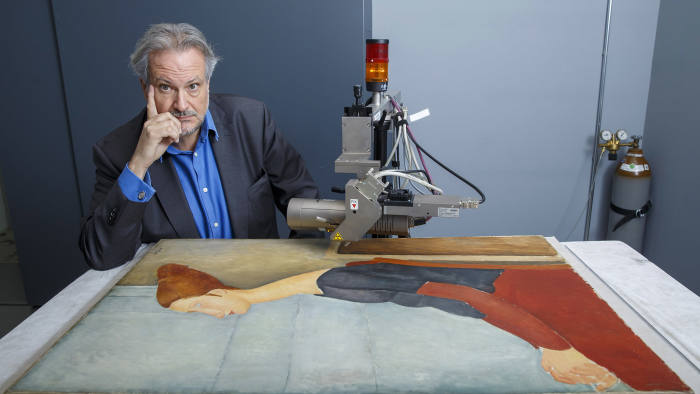 An introduction to Modigliani: New authentication projects may explode global collecting market by Daniel J. Voelker
An introduction to Modigliani: New authentication projects may explode global collecting market by Daniel J. Voelker
Counterfeiting has been the bane of the collecting market for millennia and has, in many ways, served to gin up and extend interest in coveted items like art and luxury watches. While both these respective markets have been dogged by aggressive and continually advancing counterfeiting techniques, new authentication measures and technologies are entering the fold that promise to more effectively separate the real from the pipe dream. These techniques may deliver a boost to both markets, according to two experts who provide a parallel analysis on current counter-counterfeiting activities.
By way of introducing a new piece analyzing the Modigliani market by forensic art historian Daniel J. Voelker (below), we can draw a simile with the luxury watch market, with commentary provided by Anthony Fabiano of Watch Certification Services of America (Watch CSA). Watch CSA is the authority in online watch authentication, powered by artificial intelligence. It is a SaaS company providing services to pawnbrokers, jewelers and watch dealers in order to reduce their exposure to counterfeit watches.
According to Fabiano, Rolex is the most counterfeited watch brand in the world, sharing that ignominious title with Modigliani, as the most counterfeited artist, by production volume. The issue with both “brands” lies in their pedigree: In the case of Modigliani, early documentation and cataloging is sketchy, as illustrated in Voelker’s article. In terms of Rolex, it’s the early assembly process and use of sub-contractors, essentially opening the door for non-standardization and historical interpretation.
“Prior to 1998, Rolex used a select list of sub-contractors to produce case, dial, bracelet, and movements to support the production. This may explain why we can look at auctions and see so many variations in dial printing that did not exist in early auctions, publications, and expert discussions. These pieces just surfaced, and because they appear to be a rare anomaly, they drive auctions to unparalleled levels. People buy on the rarity, just like in the art world. And these works are not necessarily always validated by Rolex USA; they are left to the marketplace and known marketplace experts to make determinations on which value and historical pedigree is based,” observes Fabiano.
“We have seen a dozen of the top vintage Rolex dealers express different opinions on vintage Rolex Daytonas, and as these pieces work their way to the authentic sale channel, consequently, the purchase history becomes the trail of authenticity. This is comparable with what is occurring in Modigliani’s art realm, when the leaders of the market run into contradicting expert evaluations and the sales results become de facto certificates of authenticity, in some cases backed by fake certificates!” he adds.
Niche counterfeiters driving super-fakes have made exponential gains in producing key targeted components to help “conversion” of parts used in completing Frankensteined watches, hoping to score on a vintage market at historical levels. High-level counterfeiters work diligently to perfect rare dial production or finished bridges to implant in stock vintage movements found in the rarest pieces, like the Rolex Daytona. This mirrors the forged Modigliani market, where, as detailed by Voelker, the exacting detail put into high-end forgeries has placed fakes on the walls of many collectors and museums and in the inventory of auction houses.
Fabiano finds many similarities between the cataloging and historical authenticating of Rolex and Modigliani. “Unvetted non-genuine fakes (an unknown number) have tainted the evaluation process and historical data of both ‘brands.’ It’s as if a hypothesis was formulated on bad science and that bad science wrote a book that guided the generations of authentications. At some point, finding the strings of inauthentic DNA is a task that can never be reworked. In the end, the marketplace has to go back to the small, original sample that is 100% validated and use scientific advances to rebuild the validation process, removing the subjective, non-scientific human processes that allowed for artistic gene pool pollution.”
With new methodologies for authentication entering the equation, the market for hitherto unvetted Modigliani paintings may be poised to explode. Will the same hold true for the high-end Rolex market? What does that art authentication market tell us is in store for the wristwatch authentication market in the not too distant future? Read Voelker’s piece below to draw your own conclusions.
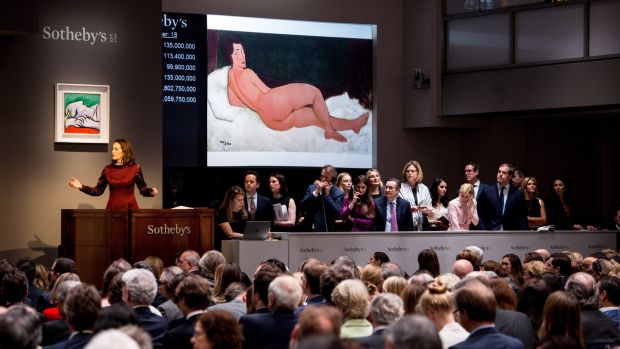
Modigliani: New authentication projects may explode global collecting market
by Daniel J. Voelker, forensic historian and art lawyer
While fraud and forgery in the art world are not new phenomena, the works of Modigliani may be setting a new bar for a confluence of value-enhancing factors, including scarcity and an inventory of outed fakes that have driven prices to record highs. The caveat on the frenetic market for authentic Modigliani art is the challenge of finding one in the first place. Because the artist’s work is infamous for numerous cases of forgery within the highest circles of the art world, coupled with poor documentation, there were previously believed to be only 337 authentic Modigliani works in existence (Esterow, 2017). But this is about to change. Several parties have been quietly working on new catalogues and new validating technologies to shake up the global Modigliani collecting market, which may result in a king’s ransom of works being authenticated and brought to market.
The realization that so many extant fakes reside on the walls of collectors, accompanied by equally worthless certificates of provenance, has led to the drive for new, validated catalogues of work. For those who can prove provenance the payoff is on par with any other scarce collectible. Paintings purchased prior to 1950 for less than $5,000 are now insured and estimated to be worth $20,000,000 or more. In just the past five years, Modigliani’s 1917 painting “Nu Couche,” sold at auction for 170.4 million dollars (CNBC, 2018).
Countless stories of false authenticity hang like a black cloud over the Modigliani market, creating enough uncertainty and skepticism to make the sale of any work a challenge. The paucity of agreed-upon catalogues creates a double-edged conundrum: the seller can’t guarantee authenticity and the buyer can’t validate a purchase. Modigliani imposters are so pervasive that it’s become something of a joke in the industry. “Modigliani was producing more dead than when he was alive,” remarked Carlo Pepi, a well-known Italian art collector (Cohen, 2014).

Authentication is the bane of Modigliani’s pedigree
The challenge of authenticating the artist’s works literally began within decades of his demise. Amedeo Clemente Modigliani (1885-1920) led a sketchy, Bohemian existence in Paris fueled by absinthe and hashish that propelled him deeply into strange, anti-social behavior. While his output was impressive, so was his propensity to give his works away in exchange for everything from rent to food to sex. Even though he had a dealer, his own drunken, slipshod approach to inventorying his works and reliably maintaining a steady residence contributed to the current problems with authentication. He had only one solo exhibition, in Paris in 1917, and that was closed by the police on the first day for displaying art deemed “obscene.” Nu couche (red nude), one of the landmark works from the exhibition, realized $170,405,000 at a 2015 Christie’s auction, making it one of the most expensive paintings ever sold (Christie’s, 2015).
Modigliani is known for portraits and nudes and was obsessed with painting the wife of his art dealer, Anna (Hanka) Zabrowska. One of the striking characteristics of the nudes is the comfort with which these models appear in their respective poses. It is believed that Modigliani, described by a friend as “a young God,” was a prolific womanizer and lover, often gifting his conquests with his artworks, thereby creating even more murky, undocumented trails and potentially more authentic works that have never been catalogued.
The starving artist was also known for trading many of his works for needs and desires. One landlord repaired old mattresses with pieces of canvas stripped from Modigliani’s artwork (Stewart, 2005). Because he treated his paintings like currency, many sales of his paintings are not well documented or documented at all. Of course, paintings sold through one of his dealers carry a degree of credibility. There is theoretically a treasure trove of works that may have been passed through generations of family members or destroyed by jealous husbands!
The quest to catalogue
Ambrogio Ceroni wrote the first and most reliable catalogue of Modiglianis in 1958, with the last update in 1970. But, Ceroni never examined or catalogued any of Modigliani’s works that had been relocated outside of Europe past late 1940’s. Due to the popularity of Modigliani’s works in the 1920s, 30s and 40s, many had been sold and had made their way to the United States, Canada and elsewhere. Ceroni recognized this ambiguity in his catalogue and claimed it was not intended to be exhaustive. Paintings unaccounted for in Europe during the period before and after World War II have been catalogued by the Art Loss Register (ALR), the world’s largest database of stolen art, a project that plays a role in the group effort to track Modiglianis.
In an ironic comment on the paucity of authentication sources, world renowned auction houses Sotheby’s and Christie’s will not currently list and sell a Modigliani unless it appears in the Ceroni catalogue, due to the unclear pedigree of many of his works (Cohen, 2014).
Kenneth Wayne, one of the world’s leading experts on Modigliani, met with Paulette Jourdain in Paris 73 years after she modeled for the Italian artist. Modigliani’s subdued 1919 painting, “Portrait of Paulette Jourdain,” portrays a modest young woman with clasped hands. This meeting was only part of Wayne’s broader quest to build up the provenance of the artist’s unacknowledged works and, ironically, solve the mystery that Modigliani himself grappled with during his career: exposing the authenticity under the mask.
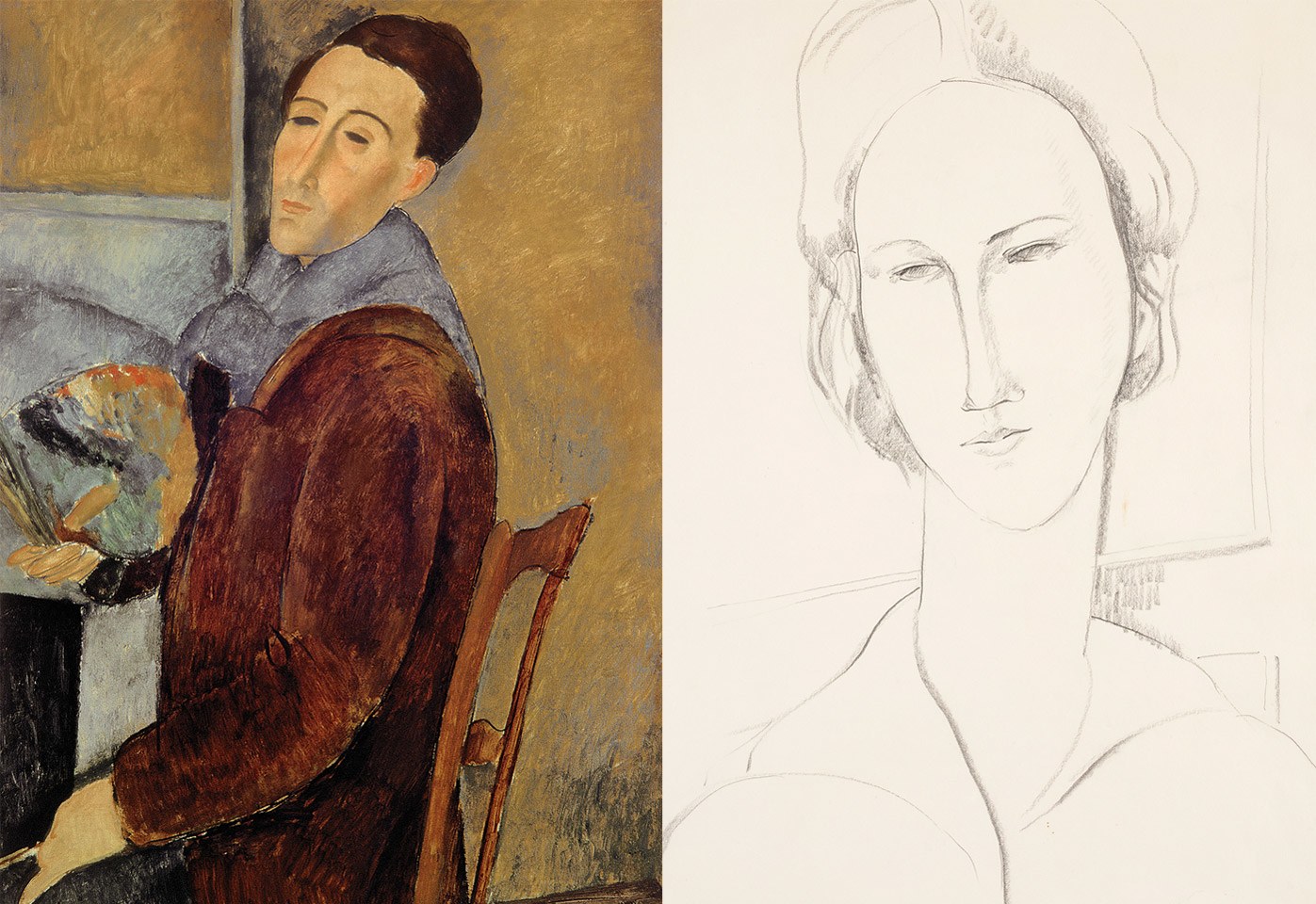
New catalogues entering the market
In 2013, Wayne founded The Modigliani Project, a not-for-profit organization dedicated to the authentication of Modigliani’s artwork. A secret meeting was held October 2019 in New York, wherein a committee of expert curators and specialists compiled a catalogue raisonné that was published November 18, 2019 online initially for accessibility. Only six paintings were selected and not one of these paintings are in the famed catalogue raisonne by Ceroni.
The Modigliani Project isn’t the first organization with plans to create the new catalogue. “To say that the catalogue raisonné situation of works by Modigliani is a mess is an understatement,” observed Wayne (Esterow, 2017). “There are various catalogues raisonnés, but each has significant problems,” he adds.
Marc Restillini, one the world’s leading experts on Modiglianis, has been promising a new catalogue of authenticated Modiglianis since 2002. After separating with the Wildenstein Institute in 2015, Institut Restillini took the project into their own hands. Restillini plans to publish his catalogue raisonné in 2020, according to the Institut (Institut Restellini, 2020). Many of the Modiglianis that did not appear in the Ceroni catalogue have since been authenticated at Restellini’s laboratory in Paris and certificates of authenticity have been issued. Hopefully this validation effort will stand future scrutiny.
Claims of authenticity have for years proven to be worthless, as have whole exhibitions of the artist’s work. In 2018, Modigliani expert Isabella Quattrocchi determined a third of the works at a Modigliani exhibition in Genoa were fakes. Twenty-one paintings and sketches attributed to Modigliani and his contemporary, Moise Kisling, had been “crudely forged,” and the entire exhibition was shuttered. Its curator, Rudy Chiappini, laid the blame on the painting’s owners and each piece’s associated provenance (D’Emilio, 2018). In 2012 famed art expert Christian Gregori Partisot, who had himself issued many certificates of authenticity, was arrested by Italian authorities, charged with selling forged Modiglianis, and later convicted.
In a drive to bring new research methods into the equation, a Paris based research team started imaging previously authenticated Modiglianis and found that the artist commonly sketched the painting on the canvas before painting the final product. Testing for titanium white, a pigment not found until 1924, can also verify that the painting was not created after the artist’s death in 1920. Securing and imaging every painting currently in collections or museums would prove not only an arduous task, but may not yield the type of results everyone seeks. Not knowing that a Modigliani is a fake means that its value remains intact. With new technologies and groups vying to sweep away the generations of deceit surrounding the artist’s work, it’s possible that the market is poised to explode.
Modigliani once said, “What I look for is neither reality nor unreality but the subconscious, the instinctive mystery of the human race.” From his muted portraits to his most sensual nudes, he strove to re-imagine human authenticity. In the final analysis, the authenticity of his own work remains the most elusive mystery.
Daniel J. Voelker is an attorney who has practiced business and commercial litigation for over 35 years and is the founder of the boutique Voelker Litigation Group. Dan has written several articles of historical significance that have received accolades both domestically and internationally. Dan has been involved recently in the authentication and sale of one of world’s most fabulous paintings and draws his knowledge from that experience.
Bibliography
Christie’s. (2015, November 10). Modigliani’s Nu couché (Reclining Nude) leads a night of records in New York. Retrieved from Christie’s: https://www.christies.com/features/Modigliani-Nu-couche-Reclining-Nude-leads-a-night-of-records-in-New-York-6782-3.aspx
CNBC. (2018, May 15). Modigliani painting fetches more than $157 million at auction. Retrieved from CNBC: https://www.cnbc.com/2018/05/15/modigliani-painting-fetches-more-than-157-million-at-auction.html
Cohen, P. (2014, February 2). A Modigliani? Who Says So? Retrieved from The New York Times : https://www.nytimes.com/2014/02/03/arts/design/a-modigliani-who-says-so.html
D’Emilio, F. (2018, January 10). Italy: Modigliani art exhibit found to be full of fakes . Retrieved from Associated Press: https://apnews.com/9b2d5fcf560d4c199b841744b14d12d8/Italy:-Modigliani-art-exhibit-found-to-be-full-of-fakes
Esterow, M. (2017, May 3). The Art Market’s Modigliani Forgery Epidemic. Vanity Fair.
Institut Restellini. (2020, January 1). Catalogues Raisonnes. Retrieved from Institut Restellini: http://www.institut-restellini.com/en/catalogues-raisonnes/
Stewart, D. (2005, March). Modigliani: Misunderstood. Retrieved from Smithsonian Magazine: https://www.smithsonianmag.com/arts-culture/modigliani-misunderstood-84411676/


